SITE MAINTENANCE IN PROGRESS
Saw Blade Storage Box
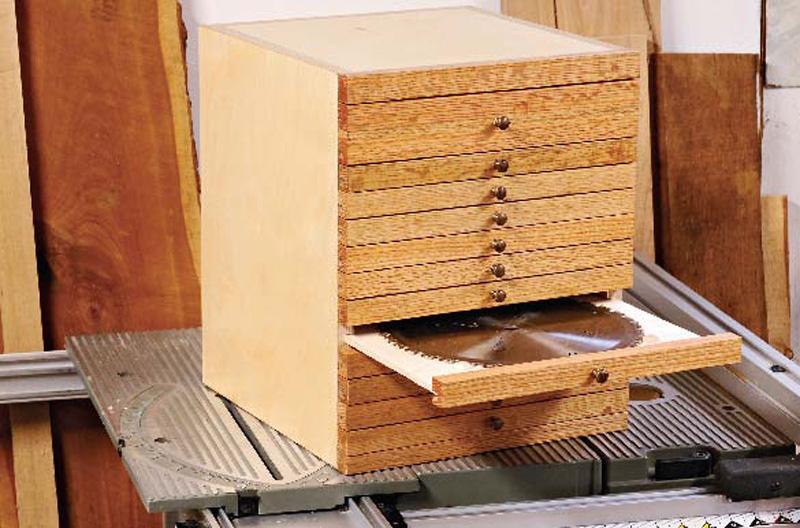
This saw blade storage box (aka ‘the box’) contains 12 drawers and provides plenty of storage space for all the blades you will likely ever need.
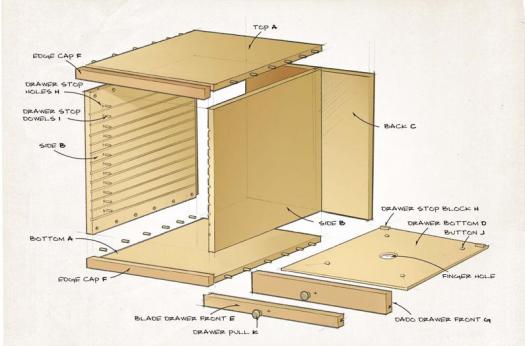
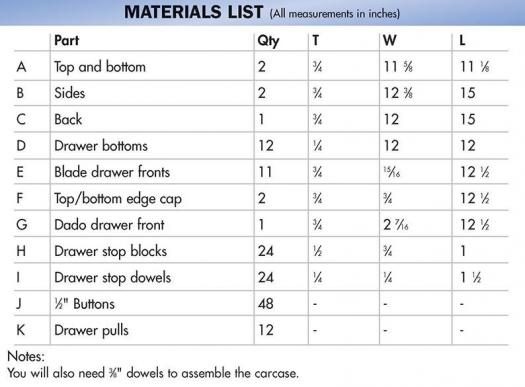
Finding storage space in the shop can be a challenge. Many power tools come with their own plastic carrying case designed specifically for that tool. However, when you buy a new blade for your table saw it normally comes on a cardboard backer or in one of those wretched plastic blister packs. Such packaging may do an admirable job of protecting the carbide teeth on its journey from the factory to your shop, but once unwrapped, you are on your own. In addition, as most woodworkers will acquire several different blades specifically suited to various types of cuts over the years and your storage problem is compounded.
This saw blade storage box (aka ‘the box’) contains 12 drawers and provides plenty of storage space for all the blades you will likely ever need. Baltic birch plywood is the ideal material for this project. It is stiff, strong and unlike a lot of plywood that you find these days, it is flat. The drawers run in ¼” grooves cut into the plywood sides, and for them to operate without binding, the material for the bottom must be flat. Each drawer is faced with a strip of red oak with a brass knob, and incorporates a stop on the rear edge to prevent it from accidentally being pulled all the way out.
The Box
• Cut the top and bottom (A), sides (B) and back (C) pieces of the box to size.
• Under normal circumstances the sides would sit between the top and the bottom, but because the first drawer groove is only ¼” up from the bottom it would have conflicted with the dowels used to join the carcase bottom to the sides.
• Drill ⅜” dowel holes along the four corners of the box (I used my DowelMax), and space the holes every 2 ¾”. Drill the holes in the bottom and top ½” inch deep, the ones in the sides 1″ deep and use 1 ½” dowels. Do not glue the joints yet.
• Set up a dado blade in your table saw and cut a ¼” wide dado, 15⁄16″ up from the bottom of both sides, then repeat this at 1″ intervals for each blade drawer. The top drawer is extra deep to accommodate a dado blade set. The drawer bottom should fit snugly into the dado yet still be loose enough to allow it to slide back and forth.
• Use the dado blade to cut a ¾” wide by ⅜” deep rabbet on the back of both sides. This will house the ¾” back panel.
• To provide a drawer stop to keep the drawers from accidentally being pulled all the way out you will need to drill a set of ¼” dowel holes in each side. Set up a fence on the drill press table to drill a row of holes 1 ¼” back from the front of the box. Drill these holes to a depth of ½”, ½” up from the drawer groove. There will be one on each side – two for each drawer.
The Drawers
• Cut the 12 pieces of ¼” plywood for the drawer bottoms (D).
• Use a 1 ⅝” saw tooth bit to cut a hole in the center of each blade drawer bottom. Use a backer board to prevent blowing out the bottom of the hole as the bit breaks through the other side.
• Mark out the locations for the wooden buttons that hold the saw blade in place on the drawer bottom and drill them out with a drill press. The buttons I used were ⅝” in diameter and mounted in a ½” diameter flat bottom hole. To make gluing in the buttons easier, do not drill all the way through the drawer bottom. The buttons that I used required a hole ⅛” deep. To keep these holes even and speed up the process, set up two fences at 90º to each other on the drill press and set the necessary depth stop.
Put A Face On It
To keep things simple, each drawer is faced with a strip of oak ripped from the edge of a board. To be able to do this you must start with rough stock that is sufficiently thick to allow it to be milled to a finished thickness of 15⁄16″. As most of the red oak available is flat sawn, cutting the drawer fronts this way will present grain on the face that looks as though it were quarter sawn or rift sawn.
• Begin by milling enough material for the drawer fronts (E) to a thickness of 15⁄16″. The actual width of the drawer front should be 1⁄16″ less than the spacing between the dado’s cut in the sides, which results in a 1⁄16″ gap between each drawer.
• Cut the pieces to cap the front edge of the top and bottom (F).
• The drawer front (G) for the dado blade set must be wider to accommodate the thicker blade set. To maintain the look of the grain on the drawer fronts it will need to be glued up from other stock. Rip three drawer fronts from the same material as the other drawers and glue them up to form a wider blank. When the glue has set, use a jointer and thickness planer to bring the blank to the same thickness as the other drawer fronts and rip it to width.
• Mill the pieces for the drawer stops (H) from the same material.
• Set a stop on your saw and cut all of the drawer fronts to the same length.
• Confirm actual thickness of your drawer bottom material with the stock you have on hand and cut a dado on the rear of each drawer face to receive the drawer bottom. If your material is less than ¼” thick (and much of the plywood sold today is), then the simplest method of cutting the dado will be with two passes over the table saw for each drawer front. Make the first cut in every drawer front 3⁄16″ inch up from the bottom and then shift the fence over just enough to complete the dado.
• Mounting the knobs on the drawer fronts requires a few extra steps. Because the drawer fronts are so narrow, it is not possible to simply drill a hole in the center of each, insert the screw and fasten the knob in place. The center of the screw head would coincide with the top edge of the plywood drawer bottom. To get around this use the following method:
• Set up a fence on the drill press with an end stop to correctly position the bit at the center of the drawer front, both vertically and horizontally.
• Use the depth stop on the drill press to drill the holes in the fronts to a depth of ½”.
• Drill dowel holes in the front edges of the top and bottom as well as the cap pieces.
The Finish
• The interior of the box is not finished, so to avoid having a sloppy transition where the finished and unfinished parts meet, apply the finish to the visible parts before assembly.
• Sand the drawer fronts and the plywood box components that are to be finished.
• Apply a coat of oil to the exterior surfaces and follow this with a couple of coats of paste wax. This makes the surface nice and slippery, so it is harder for dust to stick to it during cleanup. It also makes it easy to repair any future scratches.
Bring It All Together
• Assemble the main section of the box (sides, top, bottom and back) using glue and dowels. Clamp everything up and check the diagonals to be sure it is square.
• When the glue has set on the box, remove the clamps and use dowels to attach the cap to the bottom piece. Set it aside until the glue has set.
• Lay the box on its back and place the first drawer bottom in the second dado up from the bottom. It should project above the sides of the box a distance equal to the depth of the groove in the rear of the drawer front.
• Apply a bead of glue in the groove in the drawer front. Do not apply glue to the last inch on each end.
• Invert the drawer front and press it in place on the edge of the drawer bottom, centering it on the box. Use a quick-grip style clamp though the finger hole and across the front of the drawer to hold the two pieces together, and remove the drawer from the box. Place it on a flat surface and apply additional clamps to hold everything tight until the glue sets.
• Repeat this for each drawer.
• With all of the drawers glued up, mix up some epoxy to attach the drawer stops. Apply a small amount of epoxy to each drawer stop and set them in place on the rear edge, on either side of the drawer bottoms.
• To attach the knobs to the drawer front, thread the screw all the way into the knob and use a pair of cutters to cut the head of the screw off, leaving ½” of the threaded portion of the screw in the knob.
• Mix up some five-minute epoxy and use a toothpick to place some in each screw hole. Push the knob with the headless screw into the hole. The epoxy will harden quickly, so be organized and proceed without delay.
• Install the drawers in the box, and with the drawers in place, insert 1″ dowels in the holes in the sides. This forms the other half of the drawer stop mechanism. Don’t glue these or the drawer will be in there permanently.
• All that is left to do is insert the drawers into the box and organize your saw blades. Place the cube close to your saw and you’ll always have the correct blade stored close at hand in a safe and convenient place. – CWM
Carl Duguay - carlduguay@gmail.com
Carl is a Victoria-based furniture maker and the senior editor at Canadian Woodworking & Home Improvement.
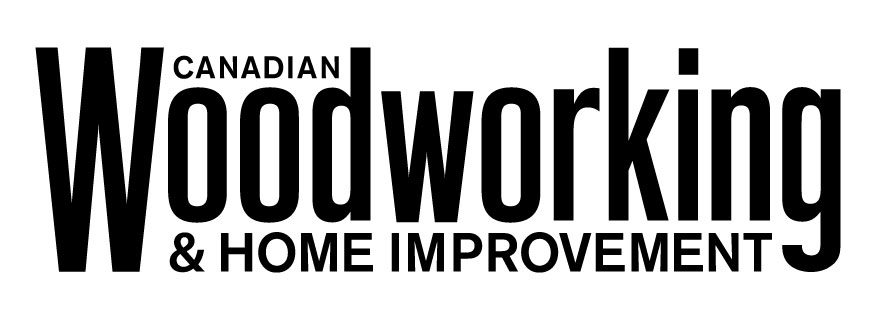
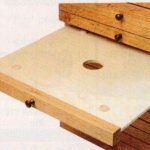
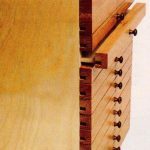
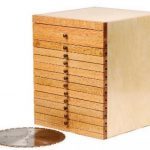
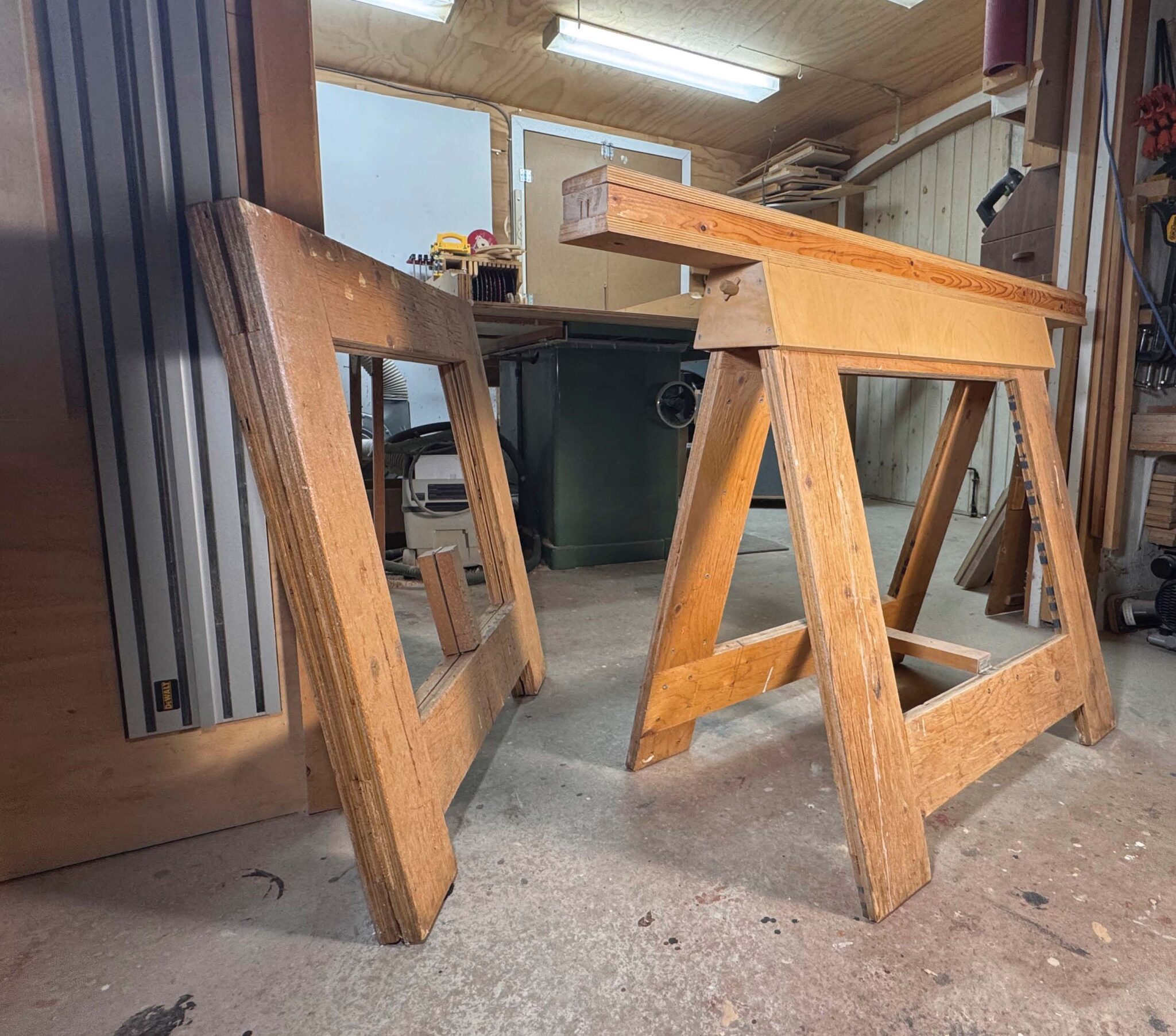
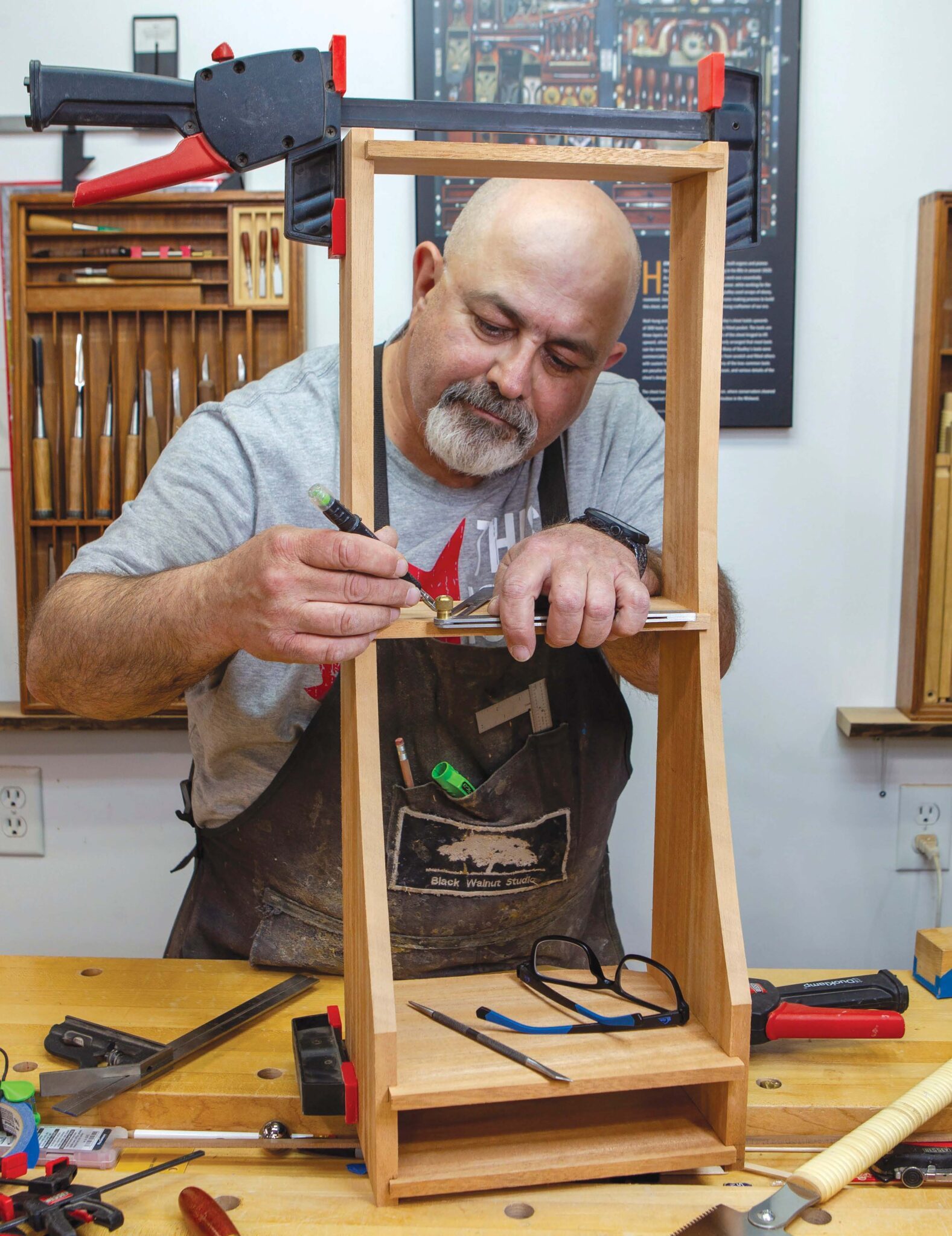
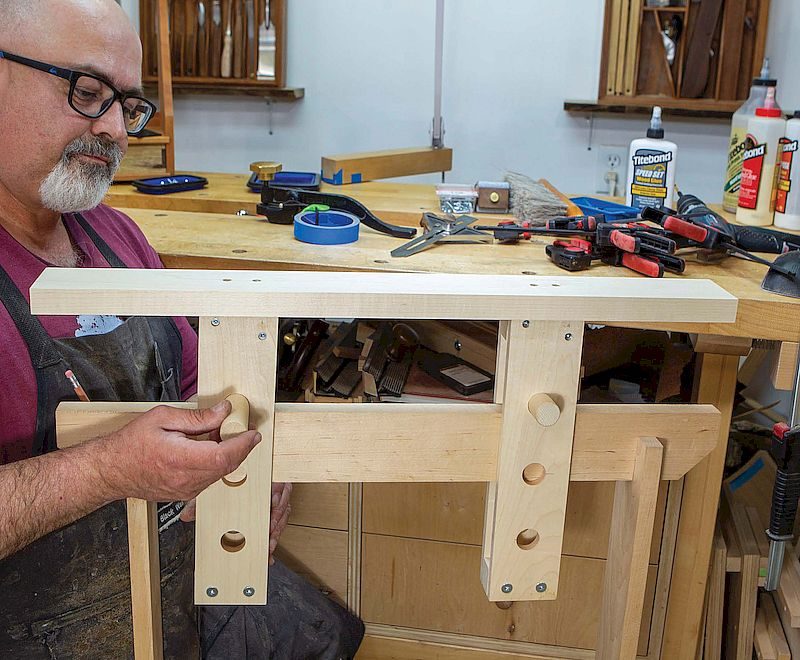
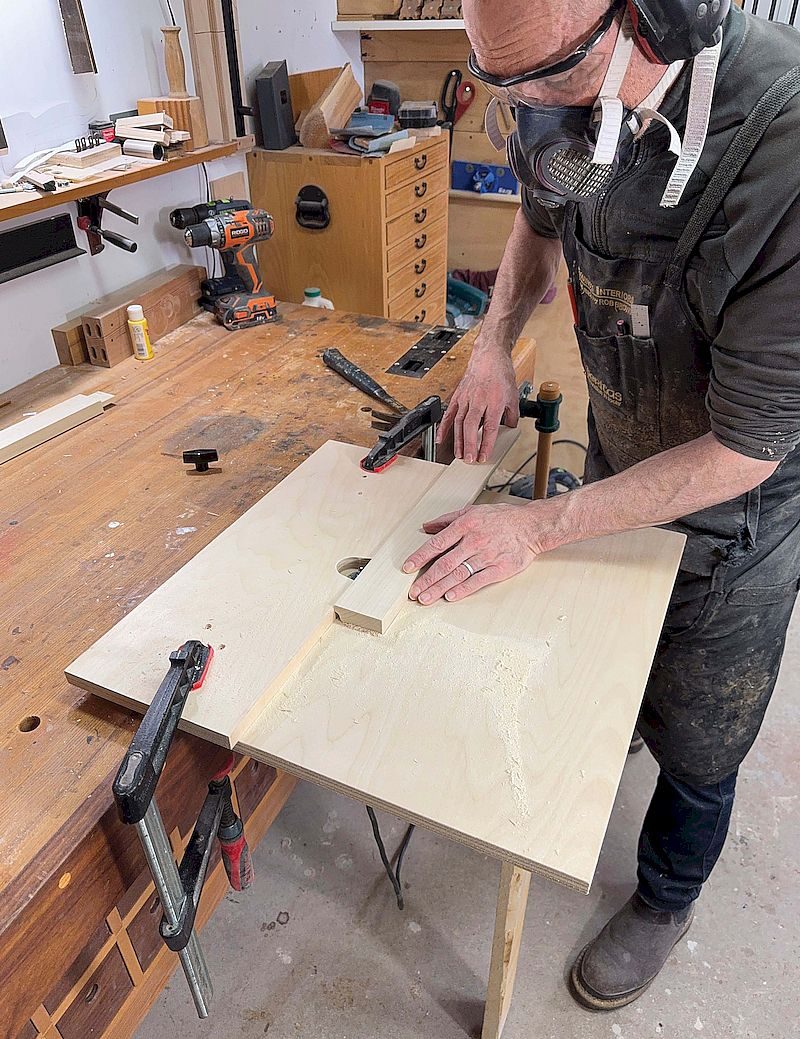
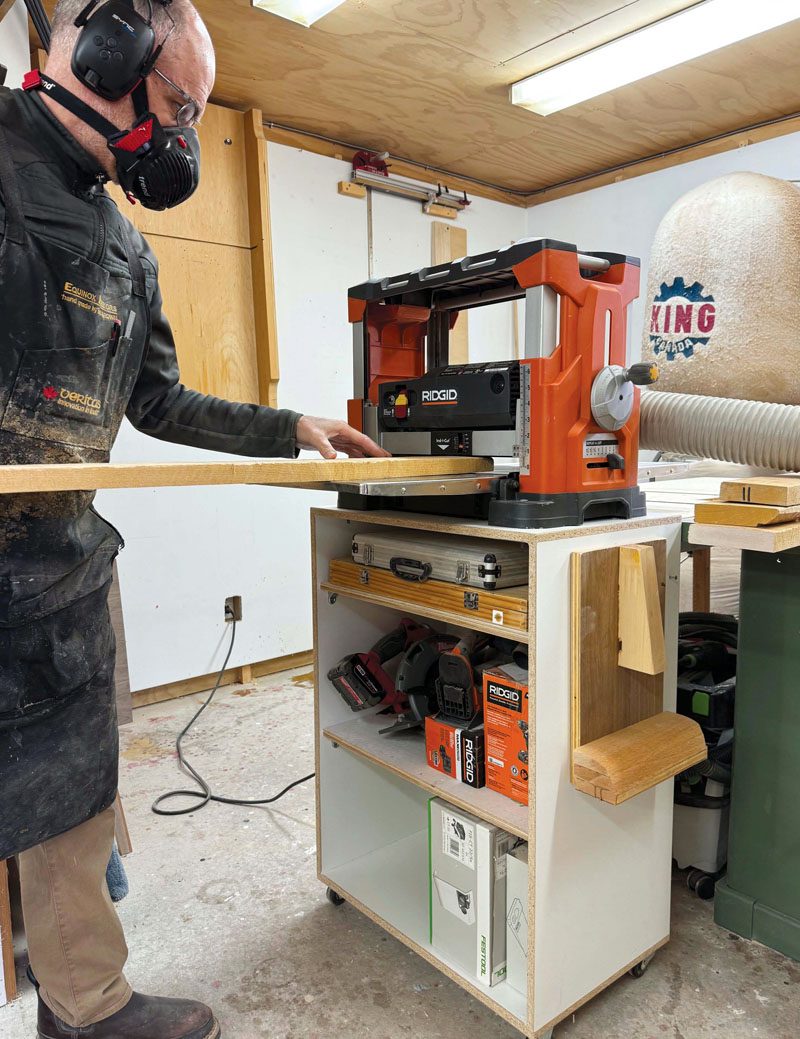
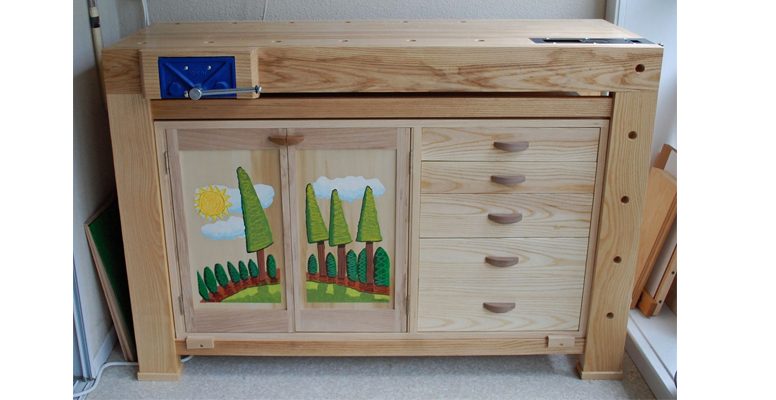

Hi Carl: love your design. Would you consider making a cabinet and ship it to me? I’m in Wisconsin. I’m new to woodworking and I’m a little overwhelmed.
Thanks for reaching out Joseph. However I only make furniture on commission now. The box is easy to make – take your time and I bet you’ll do a great job.